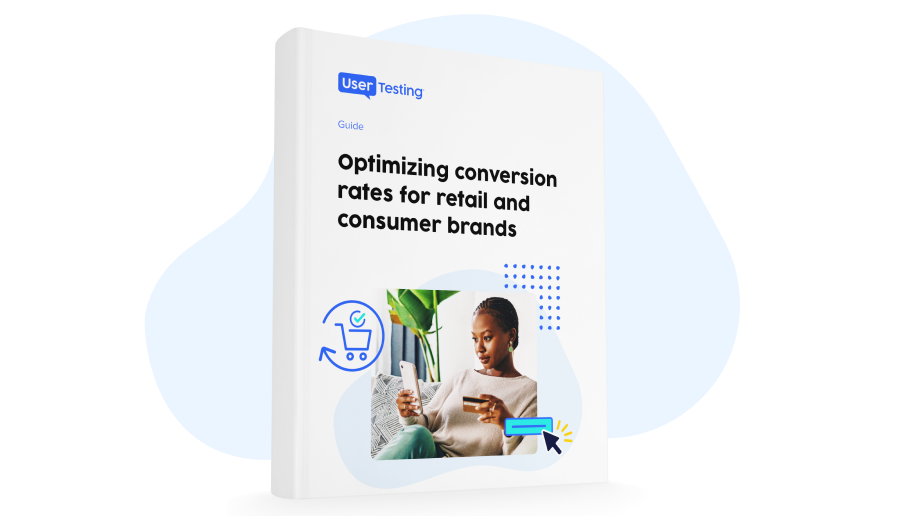
5 strategies to optimize mobile product page conversions

With mobile commerce on the rise, customers increasingly expect seamless, fast, and intuitive shopping experiences. Mobile retail sales are projected to account for nearly 44% of all US ecommerce sales in 2024. But with smaller screens, distractions, and on-the-go browsing behavior, optimizing mobile product pages for conversions is more important than ever.
A well-designed mobile product page should remove friction, build trust, and guide shoppers toward completing a purchase—whether browsing from their couch or standing in a store aisle comparing options.
So, what makes a mobile product page convert? Here are 5 proven strategies to help retailers create high-performing product pages that turn visitors into customers.
1. Prioritize speed and performance
Speed is one of the biggest factors in mobile conversion rates. A slow-loading product page can frustrate shoppers, leading to higher bounce rates and lost revenue. Studies show that for every second of delay in mobile load time, conversions can drop by up to 20%.
How to optimize mobile product page speed:
- Optimize images and videos by using compressed, next-gen formats like WebP and lazy loading to improve load times.
- Reduce unnecessary scripts such as third-party tracking tools, pop-ups, and excessive JavaScript that can slow performance.
- Implement accelerated mobile pages (AMP) to enable product pages to load faster than standard mobile pages.
- Use a mobile-first caching system to store static content and reduce load times for repeat visitors.
Test your product pages using Google’s PageSpeed Insights or conduct a usability test with real shoppers to see how quickly they load under different network conditions.
2. Make product images and videos work for mobile
On a small mobile screen, visuals are often the most influential factor in a purchase decision. High-quality, interactive images and videos help shoppers visualize the product, reduce uncertainty, and build confidence in buying decisions.
Best practices for mobile-friendly product visuals:
- Use swipeable image galleries instead of small thumbnails to create a more immersive experience.
- Enable pinch-to-zoom so shoppers can inspect product details easily, which is especially useful for fashion, beauty, and electronics.
- Include 360-degree product views so users can interact with and explore products from all angles.
- Use short, engaging videos to highlight key product features and benefits. Product pages with videos see a 37% increase in conversion rates compared to those without.
Run a mobile usability study to observe how shoppers interact with product images. Are they struggling to zoom in? Do they engage with video content? Their behavior will reveal opportunities for improvement.
3. Streamline product descriptions and key information
Unlike desktop shoppers, who have more space to read detailed descriptions, mobile users scan content quickly. They may abandon the page and look elsewhere if key details aren’t easy to find.
How to make mobile product descriptions convert:
- Use bullet points for key features and benefits to improve readability and make content easier to scan.
- Answer common customer questions upfront by addressing concerns about sizing, materials, compatibility, or warranties directly on the product page.
- Incorporate trust signals such as customer reviews, star ratings, and bestseller badges to reinforce confidence in the product.
- Make content digestible with short sentences, clear headings, and bold text to highlight the most important information.
Conduct usability tests with real shoppers to see if they can quickly find key details. Consider adjusting the content layout if they’re scrolling excessively or leaving the page to search for more information.
4. Optimize CTAs for effortless checkout
The "Add to cart" button is the most important element on the page. If it’s difficult to find, unclear, or competing with other distractions, shoppers might not take action.
How to create a high-converting CTA:
- Make it bold and high-contrast to stand out from the background and surrounding elements.
- Keep it above the fold so shoppers can see it without scrolling.
- Use direct, action-driven language such as “Get it today,” “Add to cart—only 3 left!” or “Checkout securely” to create urgency and clarity.
- Minimize distractions by removing unnecessary links or competing buttons near the primary CTA.
Run A/B tests with different CTA placements, colors, and wording to see which version leads to the highest engagement and conversions.
5. Simplify the mobile checkout experience
Even if a shopper adds an item to their cart, a complex checkout process can cause them to abandon their purchase. Nearly 70% of online shopping carts are abandoned, and mobile checkout friction is a leading reason.
How to optimize the mobile checkout process:
- Offer guest checkout to reduce friction, as many shoppers abandon their carts when forced to create an account.
- Enable autofill and mobile wallets such as Google Pay, Apple Pay, and PayPal to make transactions faster and easier.
- Use progress indicators to let shoppers know how many steps are left in the checkout process.
- Reduce the number of required fields to minimize friction. Keep forms short, asking only for essential details like name, email, shipping address, and payment information.
Run usability tests to identify bottlenecks in your checkout process. Are shoppers dropping off at the payment step? Are they struggling with form fields? Their feedback will reveal what needs improvement.
Test and refine for continuous improvement
Mobile product page optimization isn’t a one-time fix—it’s an ongoing process. The best way to identify friction points and improve conversions is to gather direct feedback from real shoppers.
With UserTesting, retailers can observe how real customers interact with their mobile product pages and uncover barriers preventing them from converting. Whether it's slow load times, unclear CTAs, or frustrating checkout flows, getting insights directly from your audience can help you create experiences that drive sales.

Optimize conversion rates
Accelerate growth and streamline operations by crafting frictionless ecommerce experiences that exceed customer expectations.





